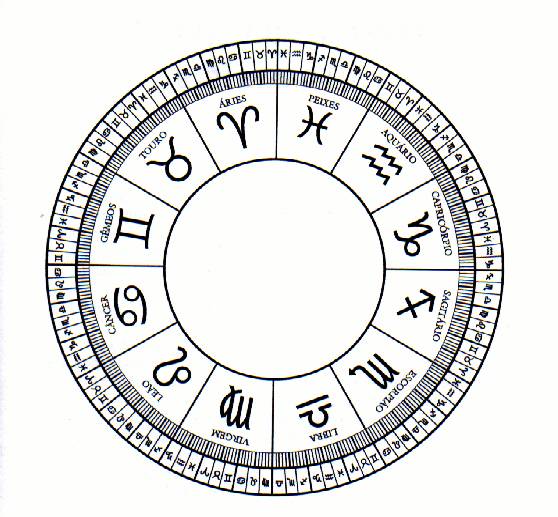

There
are sixteen divisional charts or shodasha vargas given by Parashara Muni in his
Astrological treatise or " hora shastra." The principal of these is
the navamsha. In Sanskrit, " nava " means nine and " amsha "
means part. So the navamsha refers to a ninefold division of a sign, such that
each sign is divided into nine parts of
three degrees, twenty minutes. These subdivisions give us a closer look
at the influences that surround a planet in terms of sign placement. Please
consult the diagram for an overview.
To
give a better idea, we can compare good sign position with a royal road. The
royal roads are well kept and are good to travel on. But even the royal roads
have some bad stretches, for example, a rocky stretch or a stretch that goes
through mountains and is curvy. In the same way, even a planet's good sign may
have a bad navamsha which can take the wind out of its sails, so to speak, and
diminish the strength of the placement. The point is that navamsha position
modifies a planet in terms of sign placement.
It
has to be understood, though, that the navamsha and other sub divisions do not
go so far as to jump
up and contradict indications in the main chart. Rather, they are secondary,
helpful for making decisions on the margin. Dr. B.V. Raman confirms this in a
purport of the classic Prashna Marg,
wherein he states: " Further, the navamsha may be referred to only when the
rashi
( sign placement ) is satisfactory. Here, since the rashi ( main ) chart
itself does not ensure happiness (isn't strong enough to give the results in
this case), the navamsha may be shelved." Keep in mind that Dr. Raman is an
astrologer who, throughout the long run of his literary career, has always
considered navamsha position. In all of his books the navamsha is printed right
alongside the the main chart, and its indications are examined. The same format
has been followed in his astrological magazine, which he has been editing for
more than a half a century now. So when a man such as this tells us that, when
the sign consideration in the main chart does not support a certain
consideration and that the navamsha doesn't have the authority to change things,
then we don't want to take such advise lightly.
To
give an example of how the navamsha is used to make decisions on the margin,
let's say that an astrologer sees that a planet is fairly strong in terms of
lordship and house placement, but that the astrologer is not convinced about the
planet's ability to give results because said planet is weak sign-wise. If the
astrologer then notices that the planet occupies a favorable sign in the
navamsha, then his objections in terms of sign strength may be allayed.
Not
only do we take into consideration the planet's sign position in the navamsha,
but we consider its house position and lordship there, too. Let us say that an
astrologer is contemplating the marriage karma of an individual. He feels that a
certain planet has some results to give in terms of this karma, but the planet
doesn't seem strong enough. If he were to notice, though, that the planet
occupies the house of marriage in the navamsha, or owns the house, a seasoned
astrologer would realize that this reinforces the results that the planet has to
give in terms of marriage, such that the astrologer would feel more confident
about predicting marriage results in relation to the planet.
Even so, the fact that the divisional charts are secondary indicators which only
modify to a certain extent should not be lost sight of.
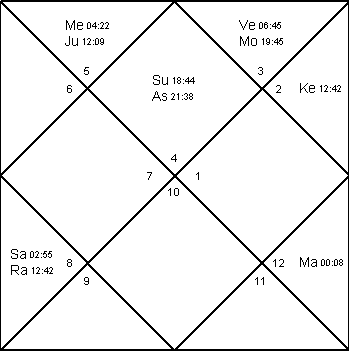
An example of the dominance of the birth
chart is given by the above chart. In the Jupiter dasha, the native lived a very
comfortable middle class life. In the Saturn
dasha, however, the native lived a humble life in an ashram, with little respect
from any quarter, subject to servitude and bad treatment- there
have been better examples of ashram life. This
is par for the course- par for the placement- in the birth chart as Saturn
occupies Scorpio with debilitated Rahu, and is the lord of the eighth.
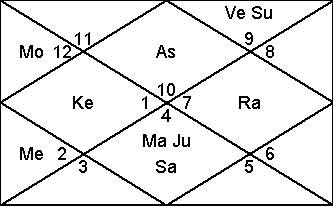 Such a placement should indicate high
status and insulation from the situation described in the paragraph above but
alas, perhaps “ the navamsha may be shelved “ because the navamsha placement
was not nearly as indicative as the placement in the main chart.
Such a placement should indicate high
status and insulation from the situation described in the paragraph above but
alas, perhaps “ the navamsha may be shelved “ because the navamsha placement
was not nearly as indicative as the placement in the main chart.
The dasamsha chart Saturn does no better-
Saturn sits in the tenth as the yoga karaka!
This leads us to another point to consider.
Judgement involving divisional charts requires exact birth data. A sign in the
birth chart will remain on the horizon for a while, an hour and a half or as
much as two hours. But divisional
signs rotate much faster. In a matter of minutes the divisional signs may rotate.
So it can be difficult to know which is the true divisional ascendent, hence
chart, chart to consider. Also, rectification on the level of navamsha or
dasamsha can be a subtle matter, not so easy to pinpoint.
The following birth chart is another one whose birth
data is ironclad. The clocks and watches in the birthing center were all set and
corrected on the day of birth. The moment of birth was marked exactly, and the
umbilical cord was cut at the very same moment.
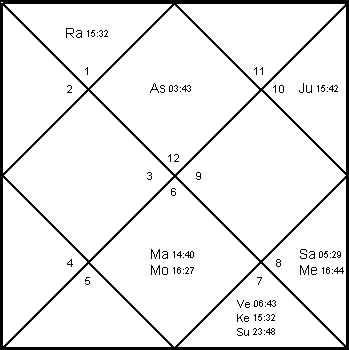
In the navamsha (below), however, none of this father karma is
indicated.
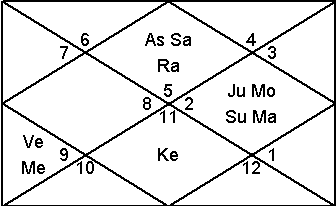
In the dvadasamsha chart, which is the divisional chart
pertaining to parents, the situation is not indicated, either. The lord of the
ninth, Jupiter, occupies a quadrant, the fourth, with the Sun. Venus, a benefic,
occupies the house of father.
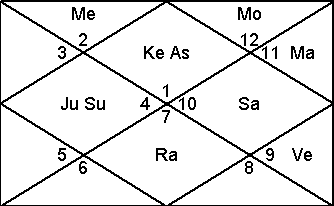
There are certainly no great afflictions to the father
karma indicated in this chart.
Enough! Divisional charts are subsidiary charts which
do not carry the same weight as the indications in the birth chart, not at all.
They may be helpful for decisions on the margin, but certainly when the results
are clearly indicated in the birth chart, then where do the divisional charts
belong in the analysis? Dr. Raman has already indicated where- “shelved.”
The
sixteen divisional charts and their significations are as follows. Remember that
the navamsha is the main divisional chart; for everyday interpretations, many
astrologers in India principally consult the birth chart and navamsha. Note that
the navamsha has a dual role as the specific divisional chart which deals with
marriage.
1.
Janma: The janma chart is the main chart, also referred to as the rashi. It is
the basis of the horoscope and has reference to all karmas in general. It is not
a sub division.
2.
Hora: Wealth
3.
Drekshana: Happiness and siblings
4.
Chaturhamsa: Destiny
5.
Saptamsa: Children
6.
Navamsha: Spouse
7.
Dasamsa: Great success
8.
Dvadasamsa: Parents
9.
Sodasamsha: conveyance
10.
Visamsha: Spiritual progress
11.
Chaturvisamsha: Knowledge
12.
Saptavisamsha: Strength
13.
Trisamsha: Misfortune
14.
Kavedamsa: Both auspicious or inauspicious effects
15.
Akshavedamsa: All areas
16. Shastiamsa: